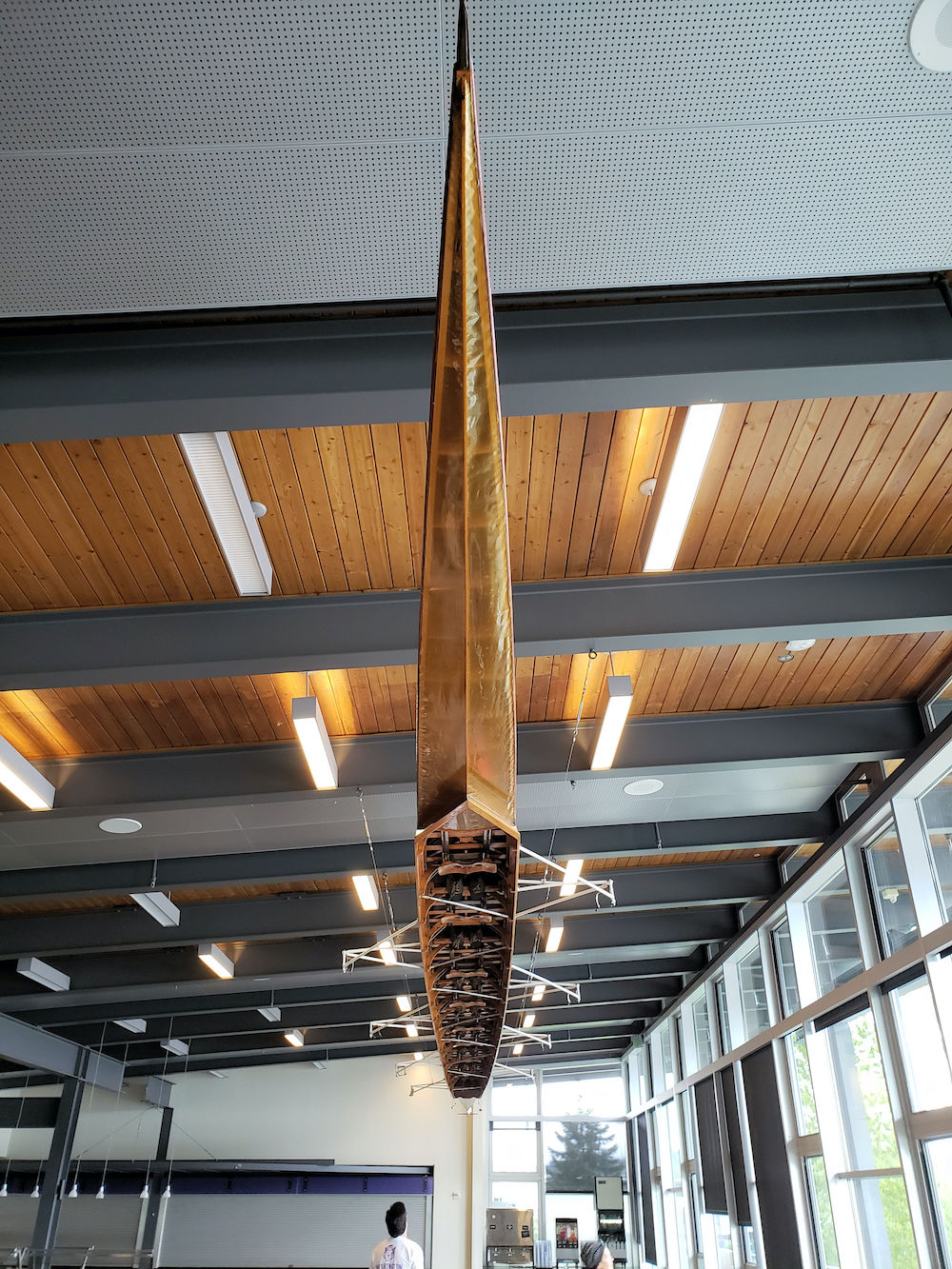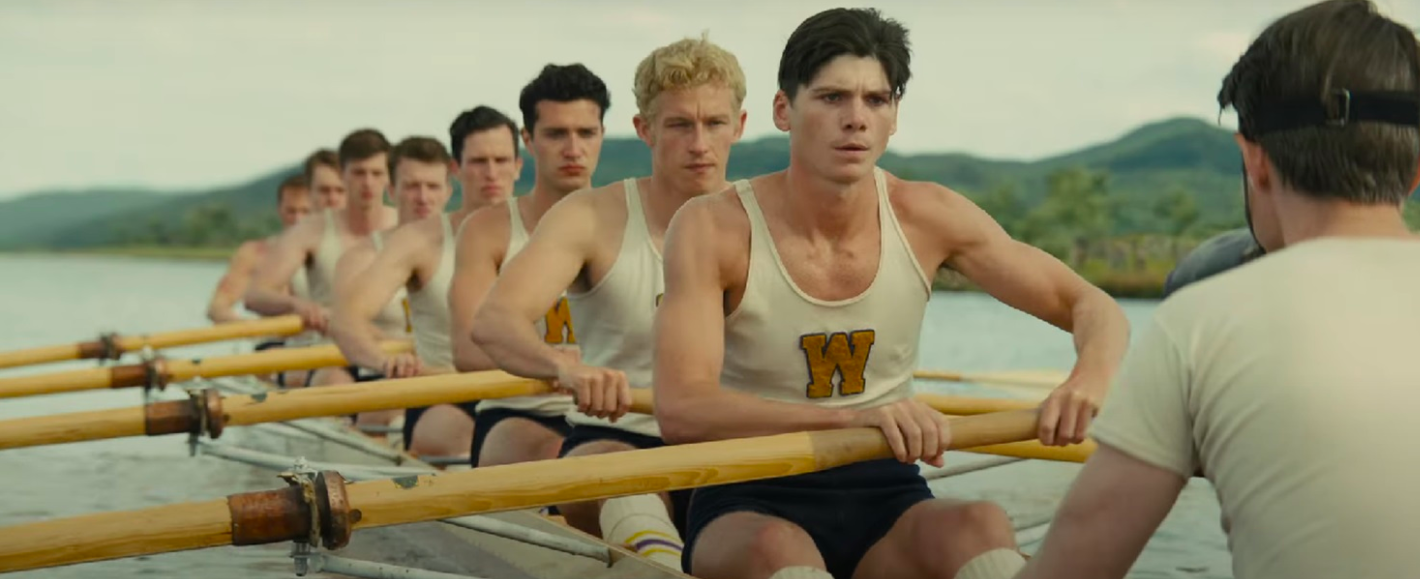In ‘The Boys in the Boat,’ we follow the story of a group of underdogs who have everything working against them. Not much is expected of them in the beginning, but soon, they prove themselves to be the best at the game and get their names down in history books. The film mainly follows Joe Rantz, a young engineering student at the University of Washington, who tries for the rowing team, hoping to make enough money to keep himself in college.
It is only when he is selected that he realizes the importance of his role in the team. While there are nine people on the team, the boat becomes the tenth and most important member. Called the Husky Clipper, it is specially designed for the team and becomes one of the critical factors in their success. What happened to it in real life?
The Husky Clipper is Now on Display at the University of Washington
‘The Boys in the Boat’ is based on the true story of the UW’s rowing team that competed in the 1936 Olympics in Berlin. They rowed on the Husky Clipper, a boat made of red cedar, spruce, and ash by the legendary figure in the field, George Pocock. Today, the boat is a reminder of the resilience and indomitable spirit of its rowers and calls UW’s Conibear Shellhouse its home. It hangs from the ceiling, with the rowers of today passing under it before they take to water.

The story of the Husky Clipper began with UW rowing coach Hiram Conibear’s search for a boat maker for the Seattle program. He found George Pocock, who’d been working with his brother, Dick Pocock, at the time, and brought him back to Seattle, where he stayed, making boats for the rest of his life. The 60-foot structure was described as “a gleaming, beautiful boat” by Pocock, who wished it “success on all the waters it speeds over. Especially in Berlin.”
When the crew made history in the 1936 Olympics, the Husky Clipper came into the limelight, but with the new team came new boats, and the Clipper was soon pushed into the background. It didn’t race in any notable competitions for a while, and the people took notice again only in 1946, when the 1936 team reunited to row it again. In 1959, the Clipper left its home when it was received by Green Lake’s Junior Rowing Commission as a part of UW’s efforts to foster interest in rowing. By 1967, it had already spent five years at the Pacific Luthern University and University of Puget Sound’s joint rowing program before the University of Washington decided to get it back for historical reasons, providing the PLU with a replacement.
In modern times, the boats look much different than the Husky Clipper and the boats that used to be rowed about a hundred years back. Wood is now not a part of the equation, with the boats being built of much lighter and sturdier material, made aerodynamic using the latest technology to make the boats as light and fast as possible. The Husky Clipper is not used in any competitive races anymore, but it does serve as an inspiration to the new generation of rowers who are made aware of the history created by the 1936 team, especially when they need inspiration to keep going in the face of all odds.
Read More: The Boys in the Boat: Is It a Real Story of a US Rowing Team?


You must be logged in to post a comment.